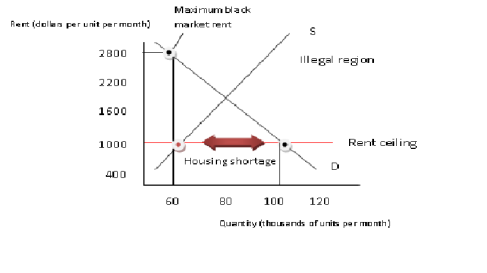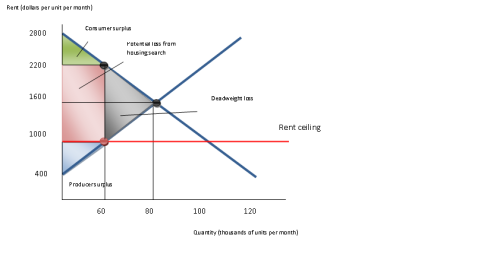Link to the main article: http://www.merid.org/Content/News_Services/Food_Security_and_AgBiotech_News/Articles/2008/04/18/Fuel_Choices_Food_Crises_and_FingerPointing.aspx
Based on this article, merig.org on 18 April 2008, it states that U.S promotes ethanol and similar fuels, politician from poor country go against the policies in the U.S because these fuels increases food prices and some of them insisted on reanalysis of biofuel policies by the government policies of U.S. Many specialists argue that government mandates for biofuel is unadvisable, agreeing that the diversion of corn into fuel production causes higher prices. Higher demand for food is due to drought and rapid economic growth. (FAO) claims that if authority’s policies and biofuel production carries on, an increase of food cost from 10 to 15 percent is possible.
In my opinion, I totally disagree with the government policies in U.S because the soil used to grow corn and grains will become exhausted of minerals and nutrients due to overused. Additional energy needed to transport causes a negative impact on the energy produced by the ethanol. To me, corn based ethanol is profitable when exports to other countries such as Brazil. Although USA major competitor, Brazil produces sugar based ethanol which indirectly competes with USA, but in 2010, the bad weather in Brazil and India, two major sugar producing countries cause decrease in supply of sugar in Brazil. Increased in global demand increased the price of sugar. These two countries are the world’s largest sugar cane producers. The decreased in sugar supply causes Brazilian producer to produce more for sugar and less for ethanol. Thus, Brazil’s sugar-based ethanol supply is affected by increased in sugar price, it reduces its exports. In the mean time, increase in consumer’s income causes demand of Brazil’s ethanol to increase. This shows income elastic and it’s a normal good. The decrease in exports of Brazil ethanol causes Brazilians to import more from USA.
Biofuel and food compete to utilize the same resources to produce ethanol which is made from corn. In 2007, Congress mandated a fivefold increase in use of biofuels. Due to this, farmers increases corn production. The increase in demand for corn increases the corn production and causes movement along PPF (production possibility frontier). Opportunity cost increases as moving along the PPF. Due to drought in South America, amount of corn produced does not change even though more land is used for corn production. The drought causes decrease in crop yield and the PPF curves inward. Higher opportunity cost causes cost of biofuel and food to increase. The increase in opportunity cost can be shown by the movement along PPF and inward rotation of PPF. It is an inconsiderate movement of government policy in U.S because they do not think about the poor people in the rest of the world.
I think that corn production causes environmental impact due to increase nutrient pollution in water ways. Based on a report, Gulf of Mexico is the third largest dead zone due to nutrient pollution causes by corn production. Fertilizing corn and waste product from ethanol production, called swill is extremely poison to aquatic life. Government should enforce laws such as each factory are required to pay each unit of pollution it causes to the environment and use resources to collect data regarding nutrient pollution and fees charged towards factories from time to time. Besides, government should provide information about nutrient runoffs to public to increase awareness on how serious nutrient runoffs to the environment. People will become more aware, knowledgeable and indirectly decrease the amount of nutrient pollution.
Ethanol and gasoline are both strongly related. Ethanol is blended and mixes with gasoline to produce fuel. In 1970, the demand for gasoline is at the peak, due to this, the price increases. Government sets a price ceiling on gasoline to enable more people to afford it by limiting the price of gasoline. Thus, shortage occurs. Due to decrease in price, more quantity demanded than quantity supplied. Inefficiency occurs and creates a dead weight lost due to marginal benefit exceeds marginal cost. The shortage must be allocated among the demanders. The seller and buyers of gasoline increased activity to get the best price for gasoline and incurs an opportunity cost which is the time spent on searching which ended up higher than the price of gasoline without price ceiling. A black market occurs when the price sells exceeds price ceiling.
Recently, the demand of gasoline declines each year after 2007. This is due to government mandates on ethanol, increased efficiency of vehicles from ethanol and ethanol blending limit. It is the limit of ethanol blended to gasoline. I disagree with the government policy in USA in having subsidies in ethanol because although it promotes biofuel for production, thus, less depends on imported oil, but ended up environmental pollution far worse than gasoline. Besides, it shows that not enough acres available in the USA to grow corn to make the ethanol needed to power the vehicle. Due to subsidy, it decreases prices of product. Domestic taxpayer suffers the most as they pay the full cost. A corn farmer increases production of corn due to increase in demand. Thus, leads to increase global price food. To overcome this problem, U.S. Department of Agriculture states that the Obama administration will implement a large sum of money to increase the biofuels production next generation. Companies will offer new biofuel projects on other plants, but not corn, and the government will match their investment. The Obama administration is planning to avoid using corn based ethanol to make fuel and relies more on USA energy independence. Apart from working up biofuel plants, the money used to fund existing corn-based plants is provided.










